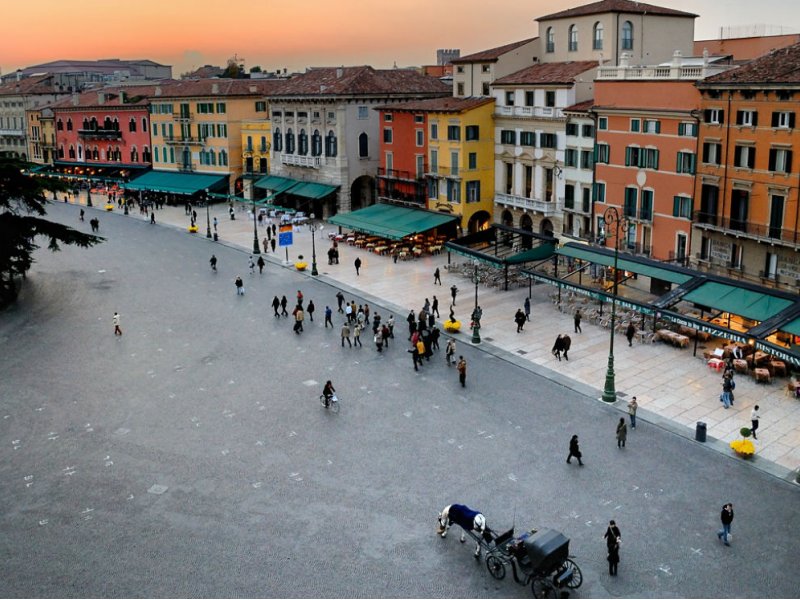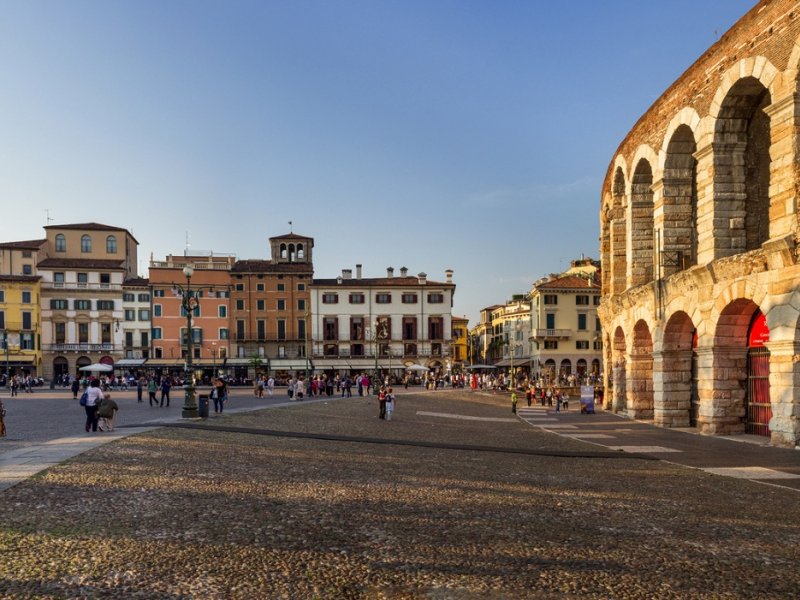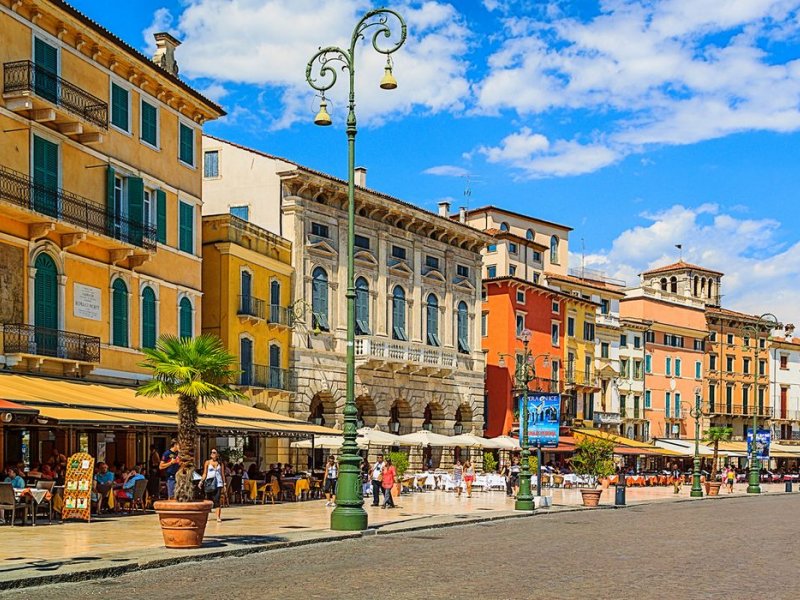This irregular square is the largest and the most interesting from an architectural point of view of all squares in Verona. Its name derives from the word “breit”, probably from the Lombardic language, which means “countryside” or from German, meaning “large”.
Piazza Bra was located outside the Roman walls surrounding the Arena, but only in the early ninth century it became a habitable area. In the communal period, houses and huts were built leaning against the amphitheatre, on the paved ground, while carts, animals and merchants crossed the slurry. Around 1600, on the eastern side of the square there was the rough district of S. Agnese, with an emergency hospital and another hospital in the centre of the square called Casa della Misericordia.
Only in 1770 the “Liston” was paved as required by Alvise Mocenigo to create a meeting place. When he visited Verona, Goethe wrote that the square was crowded with people. The soldiers used to march on the parade ground, while beautiful bourgeois ladies used to walk through and cross the square on carriages along with rich lords, to show off their possessions. On the east side of the square, people gathered for popular demonstrations and buy goods at the market.
The current layout of the square dates back to 1835, when the rough St. Agnes district was demolished, the Gran Guardia and Palazzo Barbieri were completed and, in 1883, the monument to Vittorio Emanuele II was inaugurated.










